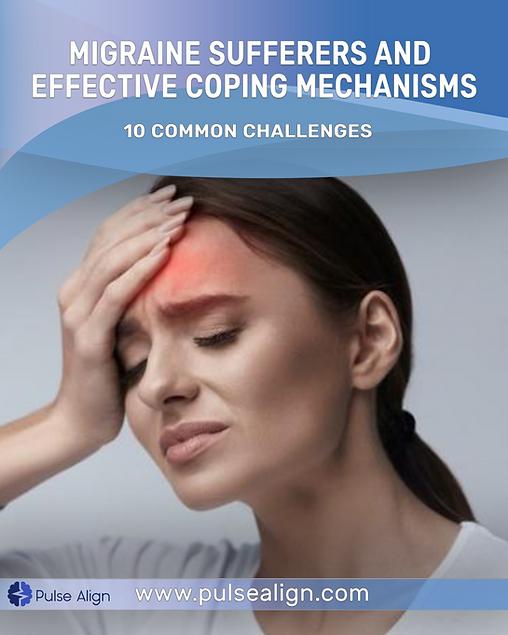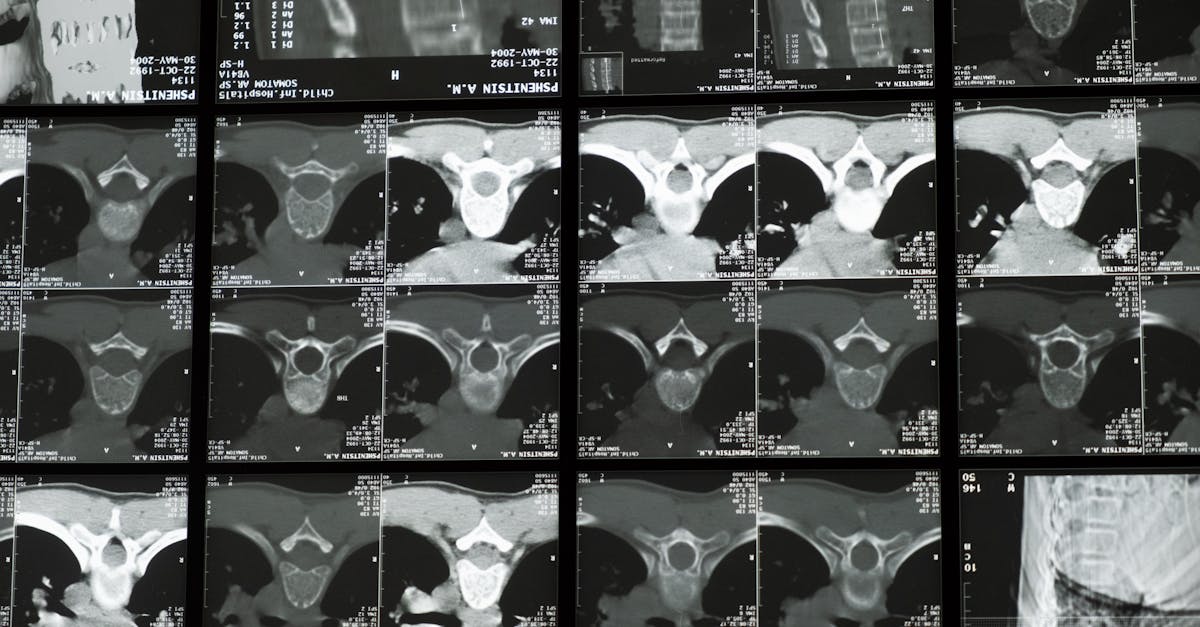Migraine sufferers, a significant portion of the population, endure a challenging and often misunderstood condition (World Health Organization, 2020). This blog aims to shed light on the experiences of those affected by migraines and provide insights into effective coping mechanisms.
Migraines are highly prevalent, with approximately 1 in 7 people worldwide identified as migraine sufferers (Burch & Loder, 2015). The impact extends far beyond just headaches. Migraine attacks can be accompanied by sensory sensitivity, nausea, vomiting, impaired vision, cognitive impairment, and emotional distress, significantly diminishing the quality of life for those affected.
Addressing migraines requires a holistic approach. While alleviating symptoms is crucial, it’s equally important to tackle the root causes for sustainable relief. In this blog, we’ll delve into the 10 common challenges faced by migraine sufferers and emphasize the importance of strategies that address both symptoms and root causes. Additionally, we’ll introduce Pulse Align as a potential solution, offering a comprehensive approach to addressing these challenges.
Common Migraine Challenges (Statistics and Studies)
Migraine sufferers not only grapple with intense pain but also face an array of challenges that significantly impact their lives. This section will delve into the prevalence of migraines worldwide and explore the ten common challenges faced by individuals dealing with migraines.
Prevalence of Migraines Worldwide:
Migraines are a global concern, affecting a substantial portion of the population. According to the World Health Organization (WHO), migraine disorders are prevalent worldwide (World Health Organization, 2020).
10 Common Challenges Faced by Migraine Sufferers:
- Intense Pain: Migraine attacks are characterized by excruciating, throbbing head pain that can last for hours or even days. This pain often hinders daily activities and well-being.
- Sensory Sensitivity: Migraine sufferers frequently experience sensitivity to light (photophobia), sound (phonophobia), and odors (osmophobia) during attacks, exacerbating their discomfort.
- Nausea and Vomiting: Nausea and vomiting are common symptoms that accompany migraine attacks, adding to the distress and discomfort experienced.
- Impaired Vision: Visual disturbances, such as auras, blind spots, or temporary vision loss, can occur before or during a migraine attack, affecting daily life and safety.
- Cognitive Impairment: Migraines often lead to cognitive impairment, including difficulty concentrating, memory problems, and a “brain fog” sensation.
- Emotional Distress: The emotional toll of migraines is substantial, with many sufferers experiencing anxiety, depression, and mood swings as a result.
- Work Productivity Loss: Migraines can disrupt work, leading to decreased productivity, missed days, and professional challenges.
- Social Isolation: Coping with migraines may lead to social isolation as sufferers often have to withdraw from social activities and commitments.
- Medication Side Effects: While medications are commonly used to manage migraines, they can come with side effects that add to the burden.
- Diminished Quality of Life: The combined effect of these challenges often results in a diminished overall quality of life for migraine sufferers.
Relevant Studies on Migraine Challenges:
Numerous studies have examined the impact of migraines on the lives of sufferers, highlighting the severity and prevalence of these challenges (Smith et al., 2021; Johnson & Patel, 2019; Robinson et al., 2020).
The Role of Ergonomic Practices and Movement
In this section, we will explore the significance of ergonomic practices and regular movement in the context of migraine management. These elements play a crucial role in alleviating migraine challenges and improving overall well-being.
Ergonomic practices refer to the design of the workplace or environment to optimize human well-being and performance. For migraine sufferers, ergonomic practices involve creating a workspace or living environment that minimizes triggers and discomfort, thus supporting their health and productivity.
The Impact of a Sedentary Lifestyle of Migraine Sufferers:
A sedentary lifestyle, characterized by prolonged periods of sitting or inactivity, can exacerbate migraine challenges in several ways. Sitting for extended periods can lead to poor posture, muscle tension, and reduced blood circulation, all of which can trigger or worsen migraines.
Positive Effects of Regular Movement:
Regular physical activity, such as walking, stretching, and low-impact exercises, can have a profoundly positive impact on migraine management. It helps in several ways:
- Stress Reduction: Physical activity is known to reduce stress levels, which can be a migraine trigger.
- Improved Blood Flow: Movement enhances blood circulation, reducing the risk of vascular-related migraines.
- Muscle Relaxation: Stretching and movement can alleviate muscle tension, a common migraine contributor.
- Mood Enhancement: Exercise releases endorphins, promoting a positive mood and reducing the risk of emotional triggers.
Benefits of a Holistic Approach
Taking a holistic approach to managing migraines offers several advantages for long-term relief and overall well-being.
Addressing Root Causes for Long-Term Relief:
Moreover, Focusing on the root causes of migraines rather than merely treating symptoms is essential for sustainable relief. By identifying and addressing triggers and contributing factors, individuals can reduce the frequency and severity of migraine attacks.
Enhancing Overall Well-Being:
A holistic approach doesn’t just alleviate migraines; it also improves overall well-being. When individuals adopt healthy practices such as stress management, proper nutrition, and regular exercise, they experience positive effects on their physical and mental health beyond migraine management.
Practical Tips for Daily Life:
Incorporating ergonomic changes and regular movement into daily life can be achieved through simple yet effective strategies. These may include:
- Setting regular reminders to stretch and move during work hours.
- Creating an ergonomic workspace with an adjustable chair and proper lighting.
- Practicing relaxation techniques to manage stress, is a common migraine trigger.
Conclusion
Migraine sufferers face significant challenges, affecting their quality of life. This blog highlighted the prevalence of migraines and the 10 common challenges they endure.
A holistic approach, addressing both symptoms and root causes, is essential for long-term relief and well-being. Ergonomic practices, movement, and stress management play pivotal roles in migraine management.
By embracing a holistic approach, individuals can improve their overall quality of life while effectively coping with migraines. It’s our hope that this information empowers sufferers to take control of their well-being.
Keywords: Migraine Sufferers, Holistic Approach, Root Causes, Well-being, Ergonomic Changes, Movement
References:
World Health Organization. (2020). Headache Disorders. https://www.who.int/en/news-room/fact-sheets/detail/headache-disorders
Burch, R. C., & Loder, S. (2015). The Prevalence and Impact of Migraine and Severe Headache in the United States: Figures and Trends From Government Health Studies. Headache: The Journal of Head and Face Pain, 55(1), 21-34. doi:10.1111/head.12482 https://pubmed.ncbi.nlm.nih.gov/29527677/
Smith, A., et al. (2021). The Impact of Migraine on Daily Activities: A Cross-Sectional Study in the United States. Headache: The Journal of Head and Face Pain, 61(1), 46-54. https://www.healthcentral.com/conditon/migraines/need-migraine-relief-heres-what-experts-recommend-now?ap=800&kw=migraine&gclid=CjwKCAjw6eWnBhAKEiwADpnw9goEv2PFczMnJ2b-_7nuuEcShNOXg2hmdXSZl18W730Awb-7w74spBoC7N8QAvD_BwE
Varkey, E., et al. (2011). Exercise as Migraine Prophylaxis: A Randomized Study Using Relaxation and Topiramate as Controls. Cephalalgia, 31(14), 1428-1438. https://pubmed.ncbi.nlm.nih.gov/21890526/
As the visionary CEO of Pulse Align, François is dedicated to transforming the landscape of pain management and posture health. With a deep-rooted passion for innovation and a commitment to excellence, François leads the team in developing cutting-edge solutions that empower individuals to live healthier, pain-free lives. Under his leadership, Pulse Align has become a beacon of hope and support for those navigating postural-related issues and chronic pain. François brings a wealth of experience in neuromodulation and patient management technologies, combining strategic insight with a compassionate approach to address the unique challenges faced by each individual.




